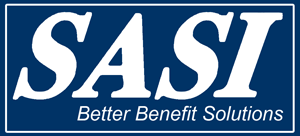We all know that enrollment can be complicated. But with the following tips, open enrollment communications with your employees can be simple and effective.
1. Start Early
The earlier you can get information and materials out to your employees, the better. The more you inform and offer resources, the easier their decision will be when it comes time for enrollment.
2. Keep Collateral Consistent
This is like a marketing campaign – keep it simple, yet unforgettable. Use the same colors, fonts and logos in marketing materials to provide consistency and recognition. For example, use the color blue for health insurance along with a picture of a physician or stethoscope – and always use those for information on health insurance. You could use the color green and a dollar sign picture for your retirement plan announcements, etc.
3. Communicate Your Plan and Level of Coverage.
Be sure to communicate information about your company’s benefits coverage, including the different plans that you offer and their perspective coverage, and any expected changes to benefits that you are making or considering. Communicate clear cost information to employees so they understand what they will need to pay and how their benefit is changing.
4. Highlight Major Benefit Changes
Prepare handouts outlining the major changes to your benefits and hold informational meetings, including new IRS guidelines and plan maximums. Anticipate questions and have FAQs ready for distribution.
5. Avoid Information Overload
Don’t overwhelm employees with all the information at once. Communicate new information first and concentrate on one benefit or plan at a time.
6. Provide a Benefit Plan Comparison
Show the difference in cost and the benefits for each plan. For example, if an employee has family coverage in a PPO style plan and the cost for that same plan is increasing you will want to do some examples on what the cost would be for ALL the plans you offer. The employee may decide to change from the PPO to an HMO if it is more cost effective. Remember employees care about the cost to their paycheck (or the impact to each paycheck), not necessarily their annual cost.
7. Develop Scenarios
Develop scenarios if your plan is changing dramatically. For example, what does a visit to a doctor look like from one plan to another? Co-pays, co-insurance, and out-of-pocket expenses should be examined under each plan.
8. Set a Clear Deadline Early
Set your employee deadline for the enrollment process early enough so you can handle any issues or late questions. Set the date a few days before your actual deadline to submit the information to the benefits carriers. This way you are preventing any late deadlines to the carriers and can be there to help employees if they need assistance through the process.
9. Educate Employees on Health Insurance Basics
Most employees don’t fully understand their health insurance plans, so it is your job to help them understand their options. With health insurance options changing, employees will need some education on health insurance basics. Providing definitions and examples of co-payments, deductibles, co-insurance, and out-of-pocket maximums are helpful. Avoid jargon and use language in your marketing collateral that everyone understands.
Having your internal benefits specialist, HR manager, broker, and even senior leaders participate in these discussions can be helpful. Also, try to use other forms of communication, such as handouts and graphics to help communicate this information. All of your enrollment collateral from WEX Health is available on Partner Central \Marketing Resources.
